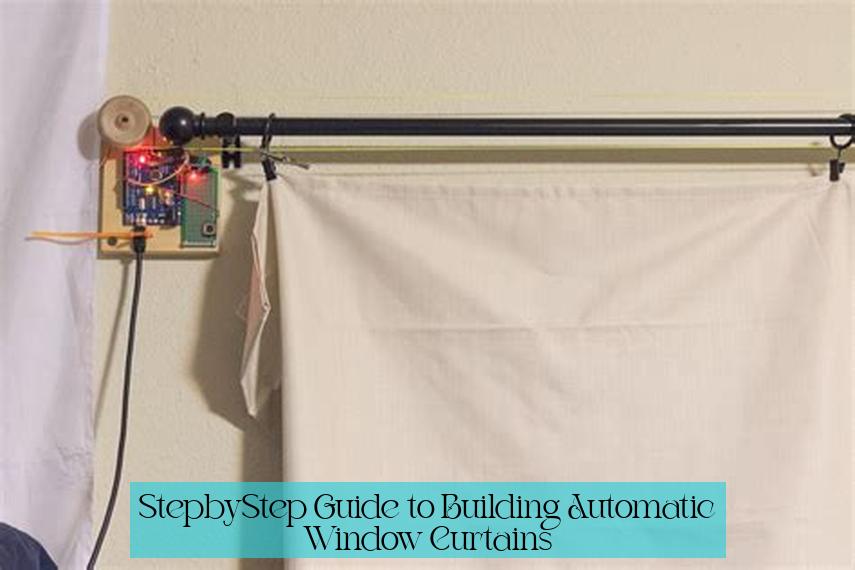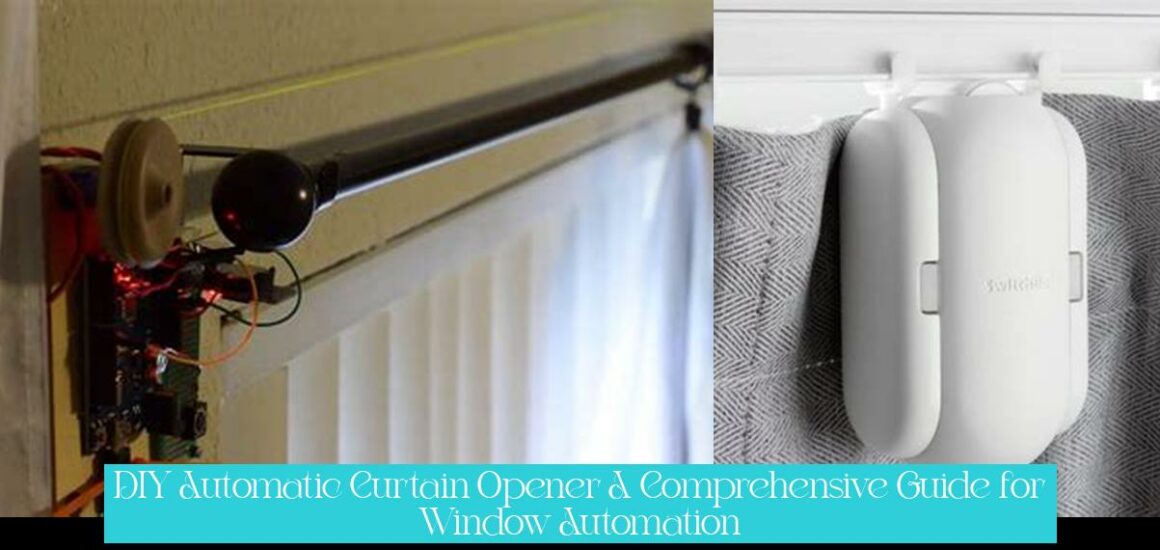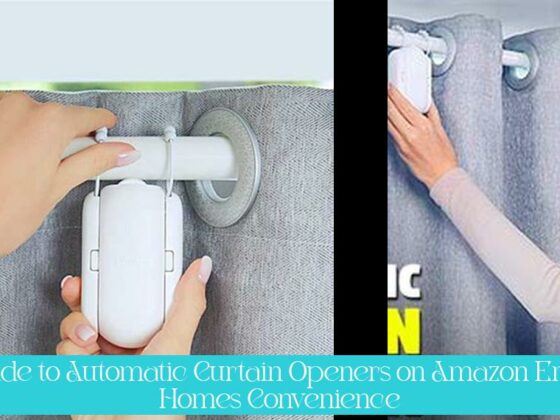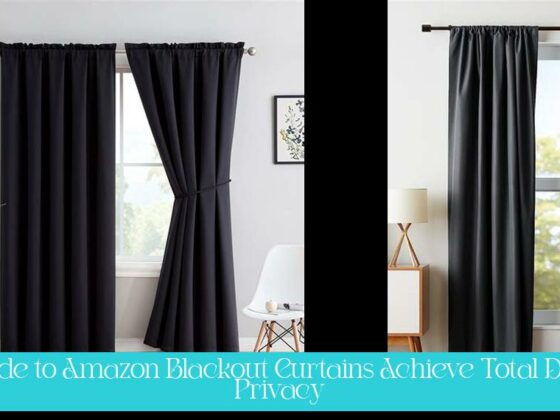Tired of manually tugging at your curtains every morning and evening? Say goodbye to the hassle with our ultimate DIY guide to creating your very own automatic curtain opener. Whether you’re a tech-savvy enthusiast or a DIY beginner, we’ve got you covered with step-by-step instructions, off-the-shelf options, and important considerations for automating your window curtains. Get ready to add a touch of modern convenience to your home with our comprehensive DIY guide.
Key Takeaways
- A-OK’s quieter designed, smoother operating curtain openers are easy to install and can be retrofitted to existing drapes without the need for construction work.
- Automatic window curtains can be made using electronics, materials, tools, layout components, soldering, Arduino code, and Android control.
- Motorized curtains use electric motors placed inside the curtain track and can be controlled through a wireless remote or a smart home automation system.
- When considering making your own curtains, it’s important to weigh the cost savings against the time and convenience factor, as sewing curtain fabrics may be cheaper but time-consuming.
- DIY solutions for automating curtains include off-the-shelf and DIY options, such as an Alexa Curtain Control System and a smart home upgrade for IKEA curtains.
- Instructions for making a motorized curtain mechanism include remote control and 3D printable and low-cost DIY options.
Automatic Curtain Openers: A Comprehensive DIY Guide

Introduction
In this modern era of home automation, motorized curtains are becoming increasingly popular for their convenience and aesthetic appeal. Whether you’re looking to upgrade your existing curtains or embark on a DIY project, this comprehensive guide will provide you with all the necessary information to create your own automatic curtain openers.
Step-by-Step Guide to Building Automatic Window Curtains

1. Gather Materials and Electronics
To begin, you’ll need to gather the following materials:
Lisez aussi Effortless Elegance: The Ultimate Guide to Automatic Curtain Openers for Your Smart Home
- Electric motors (compatible with your curtain track)
- Arduino microcontroller
- Motor driver
- Power supply
- Wireless remote or smart home automation system
- Curtain fabric
- Curtain track and mounting hardware
- Soldering iron and solder
- Wire strippers
- Screwdriver and drill
- Measuring tape and pencil
2. Assemble the Hardware
- Install the curtain track and mounting hardware according to the manufacturer’s instructions.
- Connect the electric motors to the curtain track and secure them using screws or bolts.
- Wire the motors to the motor driver and Arduino microcontroller, following the provided schematics.
- Connect the power supply to the motor driver and Arduino.
3. Program the Arduino
- Using the Arduino IDE, upload the provided code to the Arduino microcontroller.
- This code will control the motors based on commands received from the wireless remote or smart home automation system.
4. Install the Wireless Remote or Smart Home Automation System
- Pair the wireless remote with the Arduino microcontroller according to the manufacturer’s instructions.
- If using a smart home automation system, follow the app’s instructions to connect the Arduino to your home network and configure the curtains.
Off-the-Shelf and DIY Options for Automating Curtains
1. Off-the-Shelf Solutions
- Alexa Curtain Control System: This system allows you to control your curtains using voice commands via Alexa. It includes a motor, controller, and power adapter.
- Smart Home Upgrade for IKEA Curtains: This upgrade kit allows you to integrate your IKEA curtains into your smart home system, enabling control through a smartphone app or voice assistant.
2. DIY Options
- Motorized Curtain Mechanism with Remote Control: This DIY project involves building a motorized curtain mechanism using a stepper motor, Arduino, and remote control.
- 3D Printable and Low-Cost DIY Alexa Curtain Control System: This project utilizes 3D printing and an ESP8266 microcontroller to create a cost-effective Alexa-controlled curtain opener.
Considerations for DIY Curtain Automation
1. Cost vs. Convenience
Lisez aussi Easter Shower Curtain Hooks: A Comprehensive Guide to Materials and Creative Alternatives
- DIY curtain automation can be cheaper than purchasing off-the-shelf solutions, but it requires time and effort.
- Off-the-shelf solutions offer plug-and-play convenience, while DIY projects require technical knowledge and troubleshooting skills.
2. Skill Level and Time Commitment
- DIY curtain automation projects are suitable for individuals with basic electronics knowledge and DIY experience.
- The time commitment varies depending on the complexity of the project and your skill level.
3. Safety Precautions
- Always follow proper electrical safety precautions when working with electricity.
- Ensure that all connections are secure and insulated to prevent electrical hazards.
1. Can you motorize existing curtains?
Answer: A-OK’s quieter designed, smoother operating curtain openers are easy to install and can be retrofitted to existing drapes without the need for construction work.
2. How do you make automatic window curtains?
Answer: To make automatic window curtains, you will need electric motors compatible with your curtain track, an Arduino microcontroller, a motor driver, a power supply, a wireless remote or smart home automation system, curtain fabric, curtain track and mounting hardware, a soldering iron and solder, wire strippers, a screwdriver and drill, and a measuring tape and pencil. You will also need to follow a step-by-step guide to assemble the hardware, program the Arduino, and install the wireless remote or smart home automation system.
3. What are the key components required for building automatic window curtains?
Answer: The key components required for building automatic window curtains include electric motors compatible with the curtain track, an Arduino microcontroller, a motor driver, a power supply, a wireless remote or smart home automation system, curtain fabric, curtain track and mounting hardware, a soldering iron and solder, wire strippers, a screwdriver and drill, and a measuring tape and pencil.
4. What are the off-the-shelf and DIY options for automating curtains?
Answer: Off-the-shelf options for automating curtains include the Alexa Curtain Control System, which allows you to control your curtains using voice commands via Alexa. DIY options include creating a smart home upgrade for IKEA curtains and making a motorized curtain mechanism using remote control and 3D printable and low-cost DIY options.
5. What should be considered when making your own curtains?
Answer: When making your own curtains, it’s important to weigh the cost savings against the time and convenience factor, as sewing curtain fabrics may be cheaper but time-consuming.
6. What is the purpose of the Arduino microcontroller in building automatic window curtains?
Answer: The Arduino microcontroller is used to control the motors based on commands received from the wireless remote or smart home automation system. It plays a crucial role in automating the opening and closing of the curtains.










